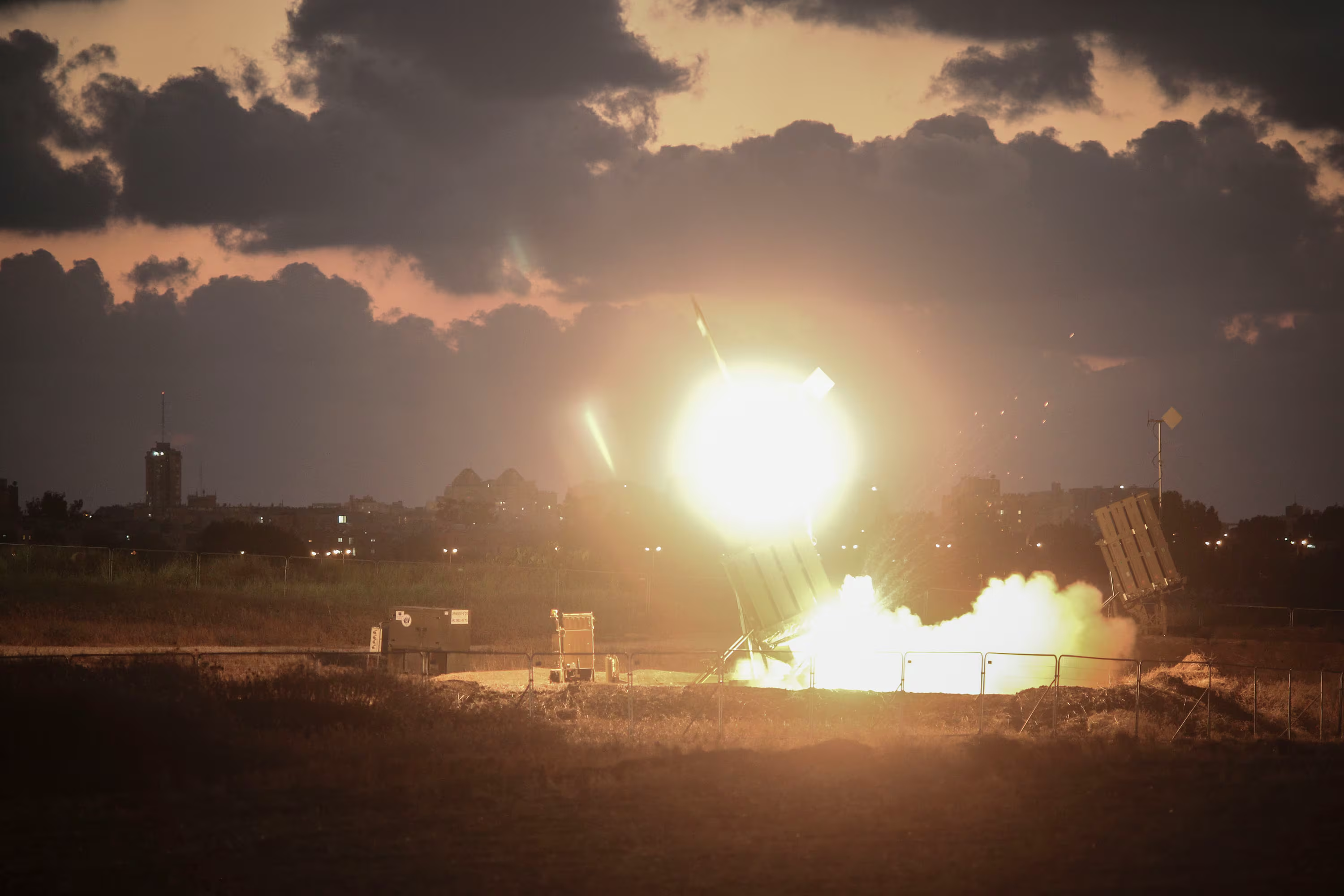TEL AVIV, Israel — The Israeli military has declared initial operational capability of a ship-based version of the Iron Dome intercepting system following a live-fire test earlier in the day that destroyed multiple incoming targets at sea.
The Nov. 27 milestone test capped more than 18 months of intensive coordination between the Israeli Air Force, the Israeli Navy and local industry to integrate Iron Dome with the Adir surveillance, track and guidance radar onboard the INS Lahav, a Sa’ar-5 corvette-class surface ship.
“Officially, from today, we added another operational layer to defend Israeli assets in the Mediterranean Sea,” Brig. Gen. Zvika Haimovich, commander of the Air Force’s Aerial Defense Division, told reporters.
“Now there is full connectivity between the ship-based Iron Dome, the Adir radar and our ground-based Iron Dome batteries. It was proven in today’s live-fire test and its performance is excellent,” Haimovich said.
Developed by state-owned Rafael, Iron Dome has been credited with more than 1,700 successful intercepts since it was first deployed in 2011. The firm is marketing its ship-based Iron Dome variants under the name C-Dome.
The Air Force officer noted that the ship-based Iron Dome would be operated by air defenders according to the same doctrine and skill sets developed for land-based Iron Dome batteries. “This naval Iron Dome is part of our new Iron Dome battalion … and the merging of land- and sea-based capabilities promises to achieve our goals in the next round of escalation or the next war.”
Navy Capt. Ziv Barak, head of the service’s weapons department, said lessons from Israel’s 2014 Gaza war drove requirements for a sea-based Iron Dome for defense of the Israeli coast, Israeli ships and offshore energy assets. However, he emphasized that integration of the ship-based interceptor and its interoperability with land-based systems could just as easily be used to defend against threats beyond its northern border.
RELATED

“For the first time, we used the Adir radar to detect and track threats, and we used Iron Dome missiles to intercept the threats. For the Navy, it’s a very high-value capability,” Barak said.
Developed by Elta Systems, a subsidiary of Israel Aerospace Industries, the ELM-2248 Adir radar was initially developed to support the more sophisticated Barak-8 anti-missile and air-defense system. Now that it has been proven to also support Iron Dome, the Navy will use the radar to defend against salvos of less expensive rockets and lower-tier threats as well as higher-end threats like the supersonic, anti-ship P-800 Yakhont cruise missile.
In an interview earlier this year, a senior officer at the Israeli Navy headquarters said that in response to the growing rocket threat to Israel’s offshore energy assets, the service plans to double the number of Iron Dome interceptors deployed on new Sa’ar-6 corvettes now under construction with Kiel, Germany-based ThyssenKrupp Marine Systems.
According to the officer, proliferation of 122mm Grad-type rockets and longer-range projectiles from Lebanon and Gaza justified efforts to equip each of the four new surface ships on order with two Iron Dome launchers, each capable of firing as many as 20 Tamir intercepting missiles.
Those four Sa’ar-6 corvettes on order with the TKMS shipyard have been the subject of an ongoing police investigation into potential conflicts of interest among key figures close to Israeli Prime Minister Benjamin Netanyahu. Assuming that contract is not canceled due to improprieties, the Israeli Navy plans to take receipt of the first ship by the end of 2019 or early 2020.
In his briefing to reporters, both Haimovich and Barak declined to discuss the exact amount of Iron Dome interceptors planned for Israel’s future surface fleet.
“It doesn’t matter how many missiles are on board; or whether there will be one or two launchers. What’s important is that we are adding additional operational capability at sea which will serve as a very relevant supplement to our multilayered concept of active defense,” Haimovich said.
Opall-Rome is Israel bureau chief for Defense News. She has been covering U.S.-Israel strategic cooperation, Mideast security and missile defense since May 1988. She lives north of Tel Aviv. Visit her website at www.opall-rome.com.






